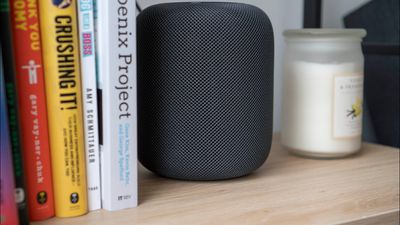Today marks two years since Apple released the HomePod, with deliveries to customers and in-store availability having begun February 9, 2018 in the United States, Australia, and United Kingdom.
At launch, the HomePod cost $349, but Apple reduced its price to $299 in April 2019. Apple has never disclosed HomePod sales, instead grouping the speaker under its "Wearables, Home, and Accessories" category, which set a quarterly record of $10 billion in revenue over the final three months of 2019.

However, much of the growth of Apple's wearables business has been attributed to the Apple Watch and AirPods. Many estimates place the HomePod's worldwide market share at around just five percent.
Pricing is the HomePod's biggest obstacle. The speaker's two largest competitors in the Amazon Echo and Google Home have low-priced models that frequently retail for $49 or below, whereas only one HomePod model is available for $299. That may change in the near future, however, as Bloomberg last year reported that a lower-priced HomePod with fewer tweeters may launch as early as this year:
Apple is also working on a cheaper HomePod for as early as next year. The current $300 model hasn’t sold very well. The new model is likely to have two tweeters (a type of loudspeaker), down from seven in the current HomePod.
Apple has marketed the HomePod as a premium speaker that also has Siri, as opposed to a personal assistant that also plays music. Early reviews agreed that the sound quality is excellent, but found Siri to be lackluster.
Over the last few years, Apple has been steadily making the HomePod more useful by adding features such as Handoff support, multi-user voice detection, ambient sounds, and multi-room audio. Beyond a potential lower-cost model, however, it remains to be seen when Apple will release a second-generation HomePod. With the current model set to launch in India soon, we may still be some time away.























